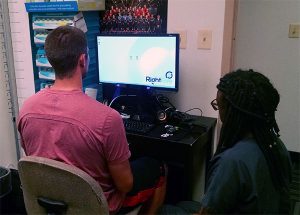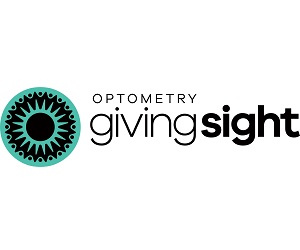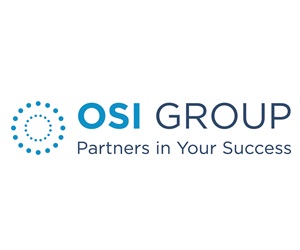
Sports vision is often referred to as a specialty within optometry, but I see it differently: as a core optometric service that can be part of most every optometric practice. In fact, what we now call “sports performance vision and dynamic vision testing” is fundamental to our optometric calling, which is to enhance the visual performance and lives of our patients.
It has been my privilege to serve as team optometrist to the Washington Redskins, Wizards, Mystics and DC United, as well the Director of Visual Performance for the Washington Nationals. But in our practice, which has five locations in the Virginia-D.C. metro area, we also help young athletes and their families to improve their visual performance every day.
Technology advances are dramatically enhancing our ability to establish visual performance baselines and then to track improvements in an objective data-based process. But we bring basic optometric skills to this process, as well. When I speak to optometry students, I explain that they will enter practice with most of the knowledge and many of the skills to do most of what we provide in neurodynamic vision services or what we call sensory-cognitive sports vision training. At the same time, I alert students to the fact that athletic trainers and physical therapists are beginning to conduct visual performance evaluations and training. Shame on us if we miss this opportunity or hand it off to others. ODs need to carve out our place at the table while we still have it.
Today, when a parent calls an OD and says. “My child suffered a concussion on the playing field and was told to see a vision rehabilitation specialist,” most ODs would say they cannot provide that. I want us to get to a place where most ODs will say, “We can provide that; let’s schedule an appointment!”

Seek Out Training & Expertise
Specializing in sports and performance vision is something that works only if you love sports. There are profits to be made, but you have to love working with athletes and teams because it often demands time away from family and practice.
When I graduated PCO Salus University nearly 20 years ago, I was focused on sports vision and vision training and sought out experts among the optometric community in my area and nearby. There were a few courses available, but I learned because I sought out the best and studied what they did.
At the time, “vision training” had a bad name since some medical professionals felt it lacked science. Also, “sports vision” had been around, and many perceived this as working with pros, not so much with kids and amateur athletes.
I became involved with the AOA Sports Vision Committee, and we changed the name–for strategic purposes–to Sports & Performance Vision. Again, we wanted to broaden the appeal to include not just ODs who were “sports specialists” but all ODs who had an interest in adding such services to a general practice.
WHAT YOU NEED: DEVELOPING A SPORTS & PERFORMANCE VISION SPECIALTY
Diagnostic Instruments:
Auto-Refractor, Visual Fields, OCT, Optomap, Portable Tonometer
Vision Training Equipment (essential & optional):
Big screen display screen, RightEye system, NeuroTrainer, Senaptic or Vima strobe glasses
Facility & Space:
Pre-test area, Exam room, Sports room, 500 square feet
Be Part of Sports Training Community
Over the past two decades, I have had the privilege of working with a number of professional sports teams, and I’ve seen a dramatic change in the medical expertise that teams now seek.
Once, there was a team doctor. Now a pro team may have a podiatrist, a physical therapist, a chiropractor, a dentist, a neurologist, an orthopedist–as well as an optometrist–on board. There are times when medical professionals outnumber players in the locker room.
This is an enormous opportunity for optometrists. We have great chances to learn from and network with an array of other medical professionals–and we can raise the level of understanding about what optometry brings to the table. Again, we need to claim our place at the table — and be part of the “performance team” of both professional athletes and amateur and youth athletes we work with.

Equipment &Technology
Another enormous change in recent years comes from advances in diagnostic and training technology. In particular, we can employ diagnostic equipment to create baselines in visual performance-eye tracking, dynamic visual focus, visual concentration, visual pursuit, binocularity, reaction times, etc.
This data is important for a number of reasons. It establishes a baseline that determines natural ability, and against which we can track improvement. RightEye, for example, analyzes data to generate what it calls a “Sports Vision EyeQ.”
Should an athlete be injured, and here concussion is a common and debilitating injury, a sports performance baseline provides a critical evaluation tool and a measuring stick in rehabilitation. Further, the ever-higher level of data on visual performance can be used to predict likelihood of injury and to extrapolate maximum performance. In professional sports, data is king, and sports organizations are adding statisticians and analysts from top schools like MIT who play critical roles in determining which athletes get top contracts.
Immediate ROI
Establishing a sports and performance vision specialty requires some instruments, equipment, space and time, but the investment need not be a daunting one. In our practice, it required adding the equivalent of only one more autorefactor and a visual field. In 10 years time, we have invested perhaps $50,000 in equipment related to sports vision training, and we saw that investment paid back in one year. In other words, we’ve been in the black for nine of the last ten years that we have incorporated a sports and performance vision component to our practice.. In other words, we’ve been in the black for nine-and-a-half of the 10 years we’ve specialized in neurodynamic vision.
But again, we do this for love of sport. And the rewards have been tremendous. We’ve helped teams on their way to achieving championships, we helped athletes back from injuries, and we’ve helped pros and kids alike to achieve dramatic and measurable improvements in playing the sports that they love.
NEURODYNAMICVISION.org is your single source for the latest information in the understanding of the power of the brain to improve overall human performance. Any new sub-specialty requires a combination of interrelated activities that help elevate an idea from obscure theory to everyday practice. NEURODYNAMICVISION.org offers these in the form of the latest information in the areas of validated scientific research; proprietary testing protocols supported by new advanced concepts in
sports-vision-related tools and training products, and consumer education, awareness and understanding of the benefits of improved performance, both on and off the field.

KEITH SMITHSON, OD
practices at Northern Virginia Doctors of Optometry, which has locations in Alexandria, Arlington, Falls Church and
Reston, Virginia. Dr. Smithson works with amateur and professional athletes to enhance visual performance for sports and to remediate
the visual symptoms of concussion. He is the immediate past chair of the American Optometric Association’s Sports and Performance
Vision Committee and member of the AOA’s TBI Task Force. He is the Director of Visual Performance for the Washington Nationals, the
Team Optometrist for the Washington Redskins, Wizards, Mystics, Spirit and DC United, as well as a visual performance consultant for the
Washington Capitals. He also is sports vision consultant for several companies. Contact: ksmithson@sportsvisionpros.com




















